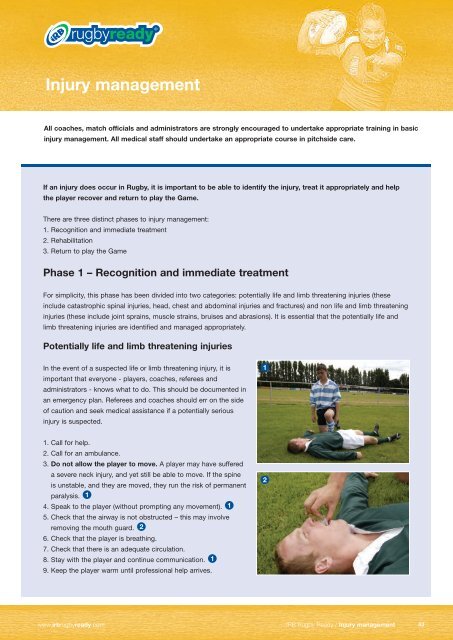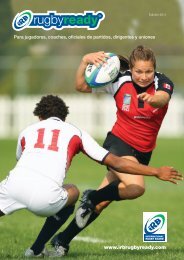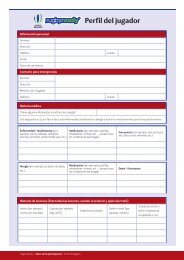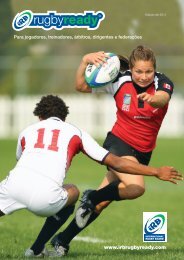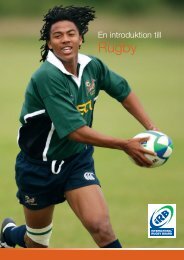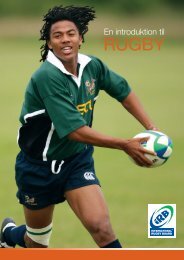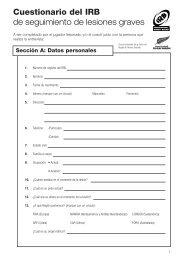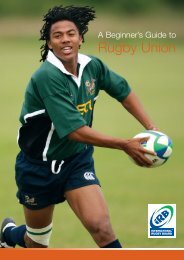IRB Beginner's Guide to Rugby - IRB Rugby Ready
IRB Beginner's Guide to Rugby - IRB Rugby Ready
IRB Beginner's Guide to Rugby - IRB Rugby Ready
You also want an ePaper? Increase the reach of your titles
YUMPU automatically turns print PDFs into web optimized ePapers that Google loves.
Injury management<br />
All coaches, match officials and administra<strong>to</strong>rs are strongly encouraged <strong>to</strong> undertake appropriate training in basic<br />
injury management. All medical staff should undertake an appropriate course in pitchside care.<br />
If an injury does occur in <strong>Rugby</strong>, it is important <strong>to</strong> be able <strong>to</strong> identify the injury, treat it appropriately and help<br />
the player recover and return <strong>to</strong> play the Game.<br />
There are three distinct phases <strong>to</strong> injury management:<br />
1. Recognition and immediate treatment<br />
2. Rehabilitation<br />
3. Return <strong>to</strong> play the Game<br />
Phase 1 – Recognition and immediate treatment<br />
For simplicity, this phase has been divided in<strong>to</strong> two categories: potentially life and limb threatening injuries (these<br />
include catastrophic spinal injuries, head, chest and abdominal injuries and fractures) and non life and limb threatening<br />
injuries (these include joint sprains, muscle strains, bruises and abrasions). It is essential that the potentially life and<br />
limb threatening injuries are identified and managed appropriately.<br />
Potentially life and limb threatening injuries<br />
In the event of a suspected life or limb threatening injury, it is<br />
important that everyone - players, coaches, referees and<br />
administra<strong>to</strong>rs - knows what <strong>to</strong> do. This should be documented in<br />
an emergency plan. Referees and coaches should err on the side<br />
of caution and seek medical assistance if a potentially serious<br />
injury is suspected.<br />
1<br />
1. Call for help.<br />
2. Call for an ambulance.<br />
3. Do not allow the player <strong>to</strong> move. A player may have suffered<br />
a severe neck injury, and yet still be able <strong>to</strong> move. If the spine<br />
is unstable, and they are moved, they run the risk of permanent<br />
paralysis. 1<br />
4. Speak <strong>to</strong> the player (without prompting any movement). 1<br />
5. Check that the airway is not obstructed – this may involve<br />
removing the mouth guard. 2<br />
6. Check that the player is breathing.<br />
7. Check that there is an adequate circulation.<br />
8. Stay with the player and continue communication. 1<br />
9. Keep the player warm until professional help arrives.<br />
2<br />
www.irbrugbyready.com<br />
<strong>IRB</strong> <strong>Rugby</strong> <strong>Ready</strong> / Injury management<br />
53


